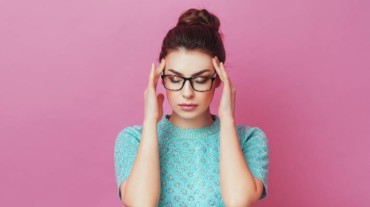
There is absolutely nothing pleasant about migraines. These debilitating headaches not only induce nausea, but also make it absolutely difficult for you to carry on with your daily life. While the exact reason why migraines happen is yet to be stumbled upon, an American research claims that members of the LGBT+ community might be more prone to these headaches.
That’s right—your sexual orientation could be a risk factor for migraines, according to a study by the University of California – San Francisco (UCSF), published in the Journal of the American Medical Association Neurology.
The survey found that nearly one third of lesbian, gay and bisexual (LGB) participants experienced migraines—58% more than did heterosexual participants.
The researchers said while their work shows LGB people are at greater risk for migraines, they could not pinpoint the reasons why. “There might be a higher rate of migraines in LGB people because of discrimination, stigma or prejudice, which may lead to stress and trigger a migraine,” the study’s lead author Dr. Jason Nagata, an assistant professor of pediatrics at UCSF, told the Thomson Reuters Foundation.
“Physicians should be aware that migraines are quite common in LGB individuals and assess for migraine symptoms,” Nagata said.
Also, read: LGBTQ+ and mental health: Here’s why queer men and women are more likely to face mental distress

Handling migraines is a painful task
Migraines can be disabling and result in missed work and frequent doctor visits.
Other studies have shown disparities in migraine prevalence by gender, ethnicity and socioeconomic status.
Not only are the causes for migraines still unclear, but researchers don’t have an answer on an effective line of treatment that goes beyond painkillers either. Most people with migraines are often prescribed painkillers to deal with an attack—which still don’t provide enough relief to help the sufferer go about their day. The result? Most people with migraines end up missing work and tiptoe around their triggers.
Also, read: 6 major health issues LGBTQ members are more likely to face, according to science
Select Topics of your interest and let us customize your feed.
PERSONALISE NOWPreventing an attack from coming on is usually more effective than finding a remedy to help it subside—even though many people find lavender essential oil and butterbur herb to be the best holistic treatment in their line of defence.
Ginger can help ease the nausea that accompanies migraines, while proper hydration and doing gentle physical exercise like yoga can prevent attacks.
Till the time, members of the scientific community don’t find a cure—or at least a treatment—for migraines, the best anyone can do is follow a healthy lifestyle to reduce their chances of an attack.
(With inputs by Matthew Lavietes at Reuters)